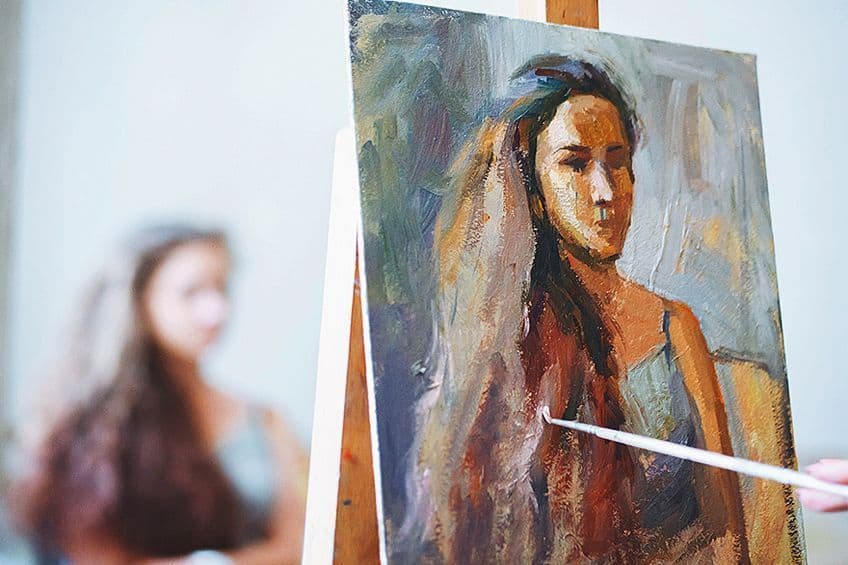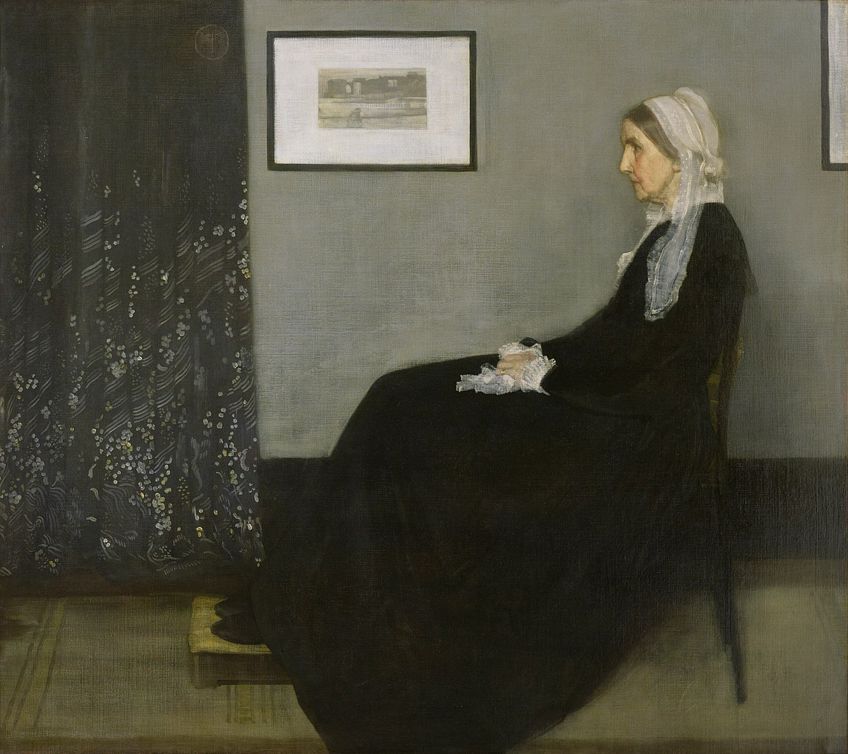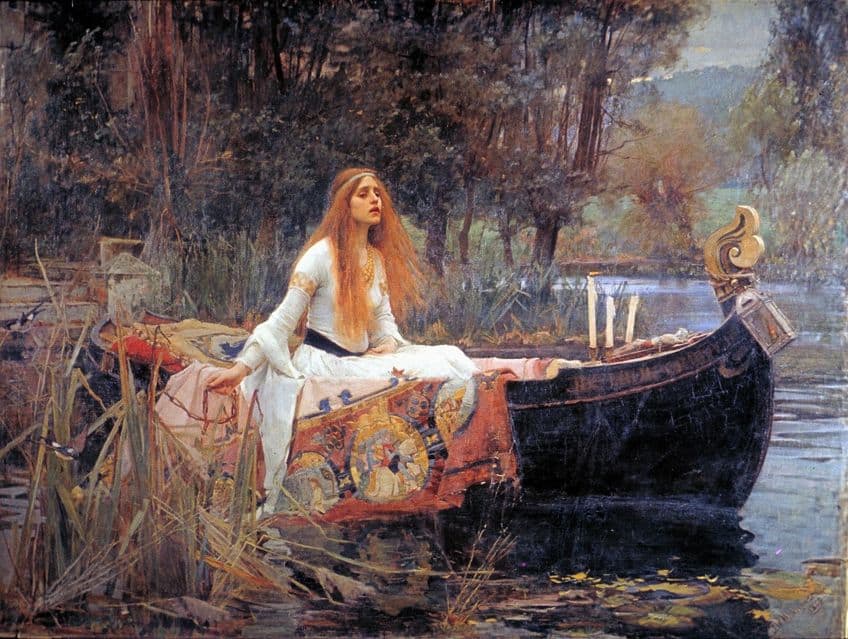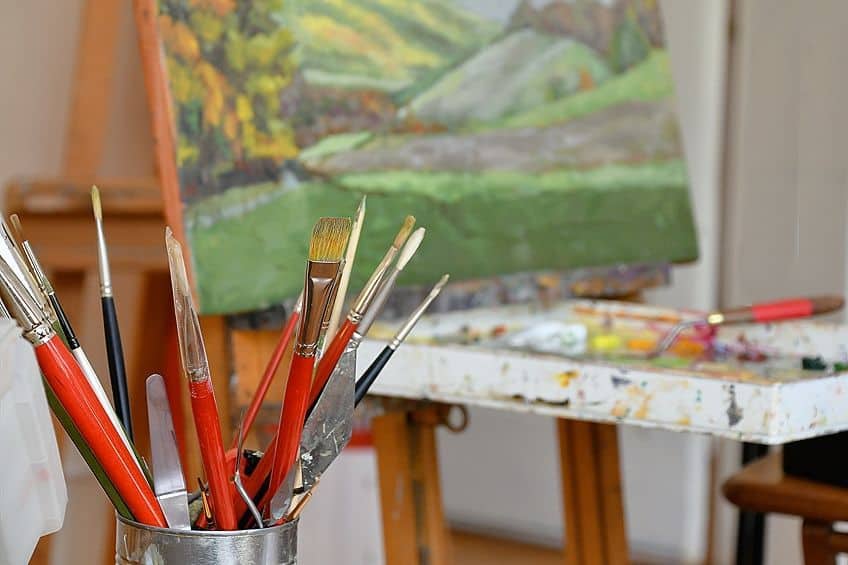How to Name a Painting – The Importance of Titling Artwork
If you are painting just for yourself, there is no need to come up with names for your art pieces. However, if you wish to showcase and market your artwork, how to name a painting is important and becomes part of the whole creative process. You might think that titling artwork is easy, but there are a few factors to consider if you wish to come up with something really good. Join us to see if we can help you uncover some brilliant ideas and names for artwork!
The Importance of Naming a Painting
Paintings are an outward expression of various ideas as well as emotions, and are expressed in a two-dimensional approach. An artist uses colors, shapes, lines, tones, and textures that produce an image, which can be recognizable or abstract. Artists can express themselves and their ideas, and their feelings.
During earlier periods in history, art pieces were not produced for the masses and were only available to a small elite group. This usually involved a patron and an artist, and the subject was agreed upon by both parties. So, the owner’s painting would know what it was all about. Also, in many cases today, private paintings may be signed by the artist, but are not accompanied by a title.

However, this changed around the 19th century, and today even more so if you wish to sell your art. Sometimes, the connection between an art piece and a title is simple. It is simply a descriptive title that tells you what the painting is all about. It can be describing where, who, or what the painting is.
Titling artwork has become a vital part of a painting, providing an emotional extension of what the artist is trying to explain. A title can give the viewer more insight into what the painting is about. Using words, and a title can help to explain feelings and other elusive concepts.
As somebody viewing a painting, your first reaction might even be to look at the title first, before looking at the painting itself. Maybe not by fully explaining the painting, but it can provide a clue as to what and why.
Good names for artwork can help to reinforce your vision as an artist, and can also help to provide a little more insight into what you were thinking during the creative process. However, some artists believe their art does not require a title.
They believe that their art should speak for itself, and the viewer should come up with their own analysis of the painting. By not providing a title, the art piece moves beyond the limitations of categorization, leaving it more open-ended. So, you can decide to leave your artwork untitled.
Whatever your preferences, in many cases, there is a need for titling artwork. Artists can grow their brand, and with much of the sales being online, if you do not have a title, it is going to be difficult for potential buyers to find you. When looking at how to name an art piece, there are certain factors to consider.
Factors to Consider When Naming a Painting
Some may find it easy to come up with names for art pieces, while others may agonize over what sounds right for them. Some artists consider a title before they have even begun painting, while others may find inspiration while they are busy, or have completed their artwork. How to name a painting? There are no absolute rules to figuring out names for artwork, but there are some guidelines to help you come up with something close to perfect.

Personal Connections
Maybe the painting you have created has a personal connection. You can then move towards a story-type title. You can try naming the painting as you would a book or film. The title can be an introduction to the narrative of the artwork.
Subject Matter
Start simple, take the subject of the painting and use this as part of your title. This could be a hint at various aspects of the painting or something you want to bring attention to, even though it may not seem the main theme of the painting. You can also simply stick to the facts, a painting of some roses can simply be named, “A Bouquet of roses”. Consider Kazimir Malevich’s painting, Black Square (1923) as an example.
This method of titling artwork works perfectly with still-life paintings among others. However, if you want to follow another path, you can consider things like the season or mood you wish to portray.
Sometimes, stating the obvious might be a bit boring, as a title should be something more that adds meaning and provides more of a thought-provoking experience for the viewer. Instead of being direct with a title, you can also add a bit of mystery. For example, The Girl With a Pearl Earring (1665) by Johannes Vermeer leaves you wondering who the girl is. Portraits can also be simple, providing the title and date as well as other pertinent information. Landscapes can also easily be titled with a location, season, or time.
Techniques Used
As a more obvious title for the painting, you can refer to the techniques used. The title can bring focus to the various artistic elements in the painting, which can make it your focal point. For example, Abstrakte Bild (1986) by Gerhard Richter.
Colors and Mood
Depending on your painting, but especially abstract or other more interpretive paintings use colors and moods to come up with a good title name. If it is a painting of yellow circles, the name can follow the same idea. Another example that portrays mood is The Scream (1893) by Edvard Munch, which conveys the intended emotion.
Conditions and Colors can also portray the mood, for example, bright and sunny landscapes or rainy and gloomy images. You can also consider the mood and try to come up with synonyms. For example, the feeling of happiness. You can think about joy, glee, bliss, delight, and pleasure amongst others to place in the title name.

Do you recognize the painting, Arrangement in Grey and Black, No. 1: Portrait of the Painter’s Mother (1871)? This is the painting done by James McNeill Whistler, who wanted viewers to be directed towards the tones and shades of the painting, with the subject only being a secondary focus. Colors and mood do play a role, but the subject is what catches the viewer’s interest. The original title is a bit vague and today, it is mostly identified as Whistler’s Mother. So, even if you want to create a title that you think represents your work, people who view the artwork might look at it differently.
Creative Approaches to Naming a Painting
Instead of the more obvious approaches to names for artwork, you can consider various other ideas. Most of these concepts need a little more discernment on the part of the viewer, which can make it more interesting than simply naming the obvious.

Wordplay and Puns
Depending on your art piece, there are many fun art puns or wordplay ideas you can consider using as a painting title. It is the humorous use of a phrase or a word that suggests a different meaning. For example, you are off to a flying art or blend the rules.
Personal Anecdotes and Stories
You can draw inspiration from your personal experiences and stories. Art can be a great medium by which an artist can tell a story. The title of the painting can then be an extension of the artist’s self-expression.
This can be a self-portrait or a painting of your last summer holiday.
Metaphors and Symbols
You can use art as a way to express symbolism, as the title can help to outline the concept. You will see this a lot in Salvador Dali’s work, for example, The Persistence of Memory (1934). Metaphors are also ideal for stimulating creative ideas. Simple ideas like “the stars are dancing” or “apple of my eye”.
Alliteration and Rhyme
You can use the sounds that words make as they run together to work wonderfully as a painting title. For example, “Beautiful Blossoming Bluebells”. Rhymes can also help to make a memorable painting title. You can also have art that is inspired by poetry. For example, The Lady Of Shalott (1888) by John William Waterhouse. This was inspired by a poem of the same name, written by Lord Alfred Tennyson.

Tips for Avoiding Common Pitfalls
When considering how to name an art piece, there are no set rules. You can come up with numerous ideas or nothing at all if that is what you want. However, in many cases today, titling artwork plays an important role. So, below are a few ideas to help you come up with the best names for art pieces.
- Try to avoid generic names or overly literal names, make them more interesting.
- Avoid using any insensitive or offensive names.
- It is a good idea to be more original and to avoid a painting title that is similar to other artworks.
- Select words that are easy to understand, read, and pronounce. Also, try to keep it short and uncomplicated.
- Put yourself in the viewer’s shoes, and think about how the title can get across what you are feeling or thinking.

- Write down a few keywords for your painting, it can be the subject, colors, mood, or anything else that comes to mind. Choose the word or phrase that stands out most for you.
- Find inspiration in books, movies, nature, fashion, song lyrics, and poetry, and try to have a broad field of interest.
- Try and get others to help you name the painting. Get their perspective on your artwork.
- If you have multiple paintings in a series, try naming them sequentially.
- Try not to title a painting with numbers, as this might seem uninspiring and unoriginal.
While the name of a painting can play a vital role, it is not an absolute rule you have to follow. In most cases, a simple and descriptive title is all you need, which allows the artwork to speak for itself. However, as we have learned, there are many ways you can come up with an amazing and unique painting title.
Frequently Asked Questions
Why Should You Create Names for Artwork?
Naming artwork can be a word or even a phrase, which is used to help describe the painting. The title can help the viewer understand what the artist is trying to get across, and sets it apart from other art pieces.
Can You Leave a Painting Untitled?
Sometimes, there are no titles or words that can sufficiently describe the painting, and an artist might feel he simply needs to call it untitled. This can be done; however, it does not help the painting to stand out from other art pieces with the same title.
Where Do Artists Place the Name of Their Artwork?
An artist can sign their name and title on the art piece at the back. You can also include the medium used, the date, and other information. If it is a print copy, the title usually appears in the middle, while the signature comes next to the edition number found either on the bottom right or left border. Wall labels can also be done for art exhibitions.
Nicolene Burger is a South African multi-media artist, working primarily in oil paint and performance art. She received her BA (Visual Arts) from Stellenbosch University in 2017. In 2018, Burger showed in Masan, South Korea as part of the Rhizome Artist Residency. She was selected to take part in the 2019 ICA Live Art Workshop, receiving training from art experts all around the world. In 2019 Burger opened her first solo exhibition of paintings titled, Painted Mantras, at GUS Gallery and facilitated a group collaboration project titled, Take Flight, selected to be part of Infecting the City Live Art Festival. At the moment, Nicolene is completing a practice-based master’s degree in Theatre and Performance at the University of Cape Town.
In 2020, Nicolene created a series of ZOOM performances with Lumkile Mzayiya called, Evoked?. These performances led her to create exclusive performances from her home in 2021 to accommodate the mid-pandemic audience. She also started focusing more on the sustainability of creative practices in the last 3 years and now offers creative coaching sessions to artists of all kinds. By sharing what she has learned from a 10-year practice, Burger hopes to relay more directly the sense of vulnerability with which she makes art and the core belief to her practice: Art is an immensely important and powerful bridge of communication that can offer understanding, healing and connection.
Nicolene writes our blog posts on art history with an emphasis on renowned artists and contemporary art. She also writes in the field of art industry. Her extensive artistic background and her studies in Fine and Studio Arts contribute to her expertise in the field.
Learn more about Nicolene Burger and the Art in Context Team.
Cite this Article
Nicolene, Burger, “How to Name a Painting – The Importance of Titling Artwork.” Art in Context. April 25, 2023. URL: https://artincontext.org/how-to-name-a-painting/
Burger, N. (2023, 25 April). How to Name a Painting – The Importance of Titling Artwork. Art in Context. https://artincontext.org/how-to-name-a-painting/
Burger, Nicolene. “How to Name a Painting – The Importance of Titling Artwork.” Art in Context, April 25, 2023. https://artincontext.org/how-to-name-a-painting/.











